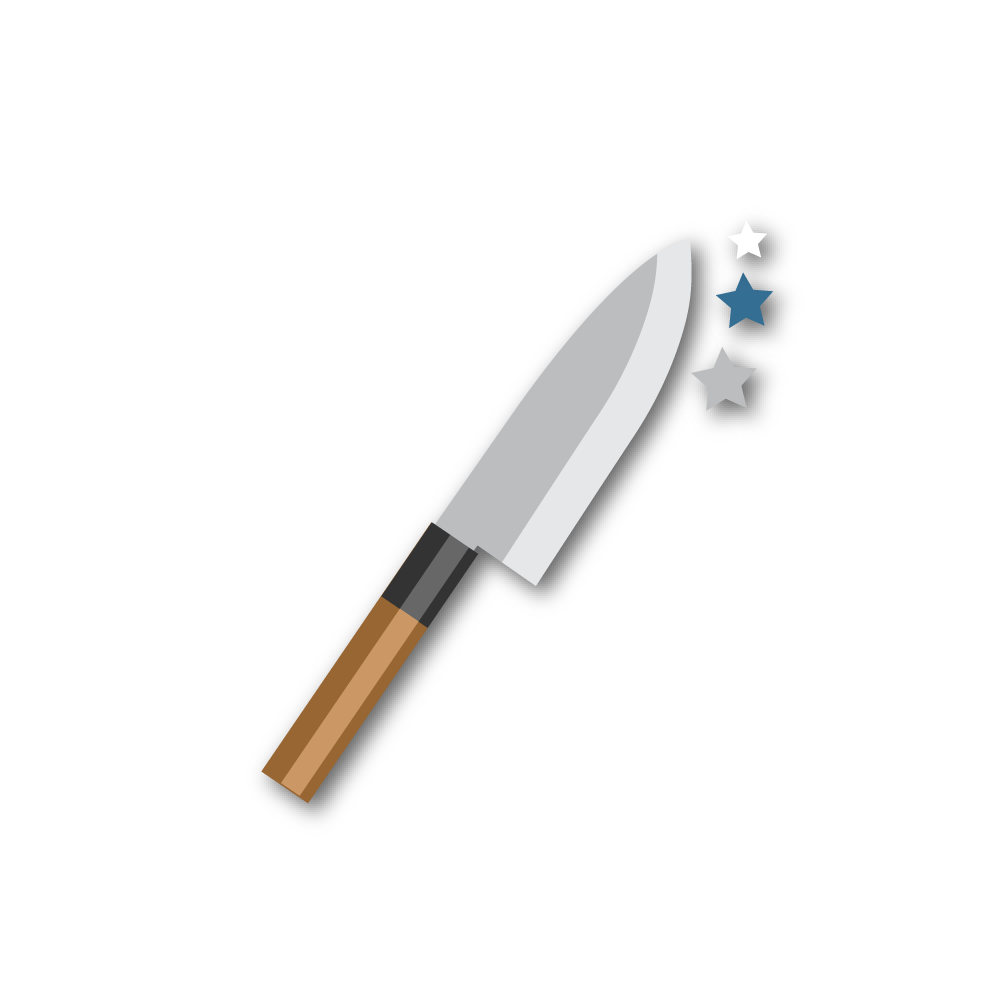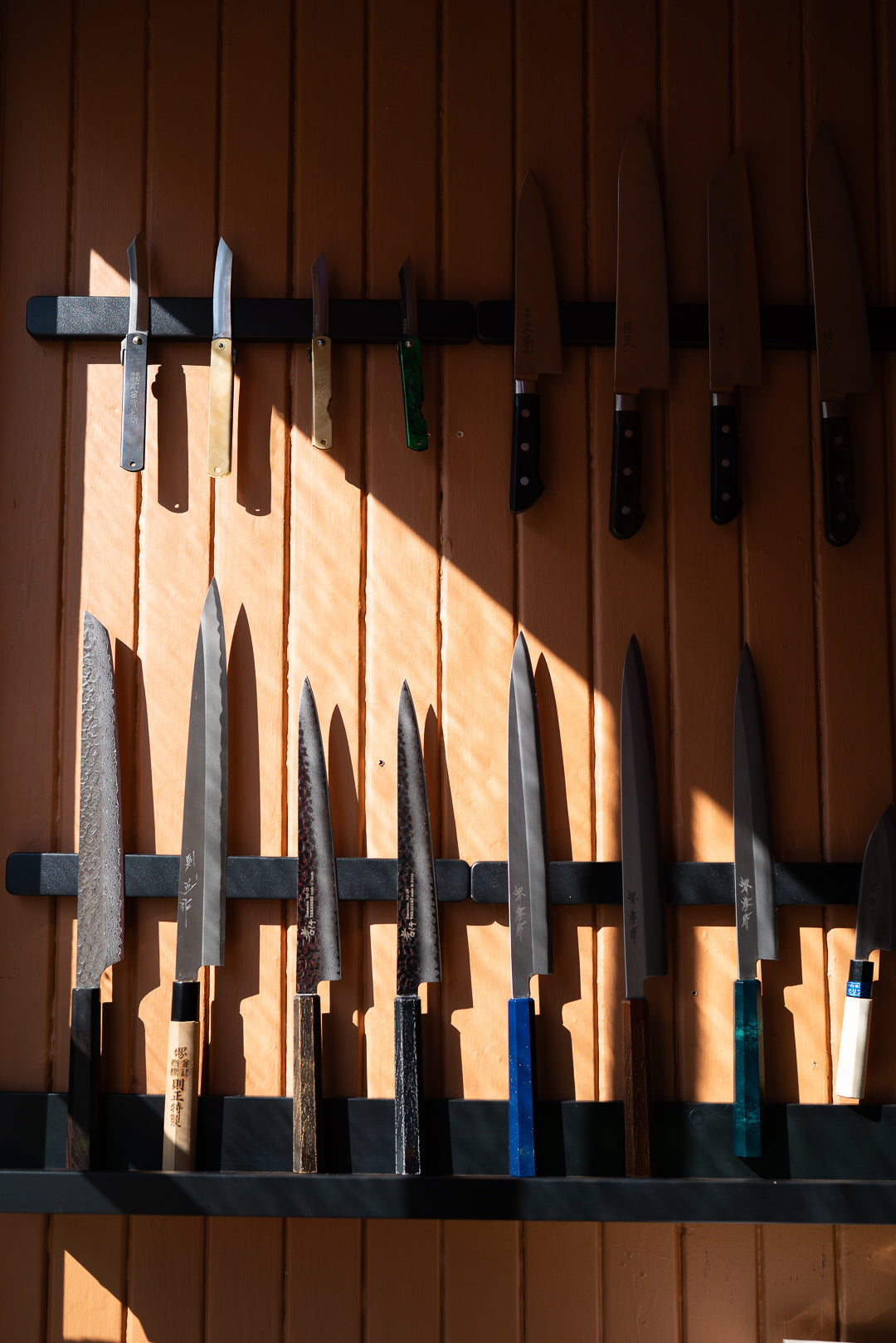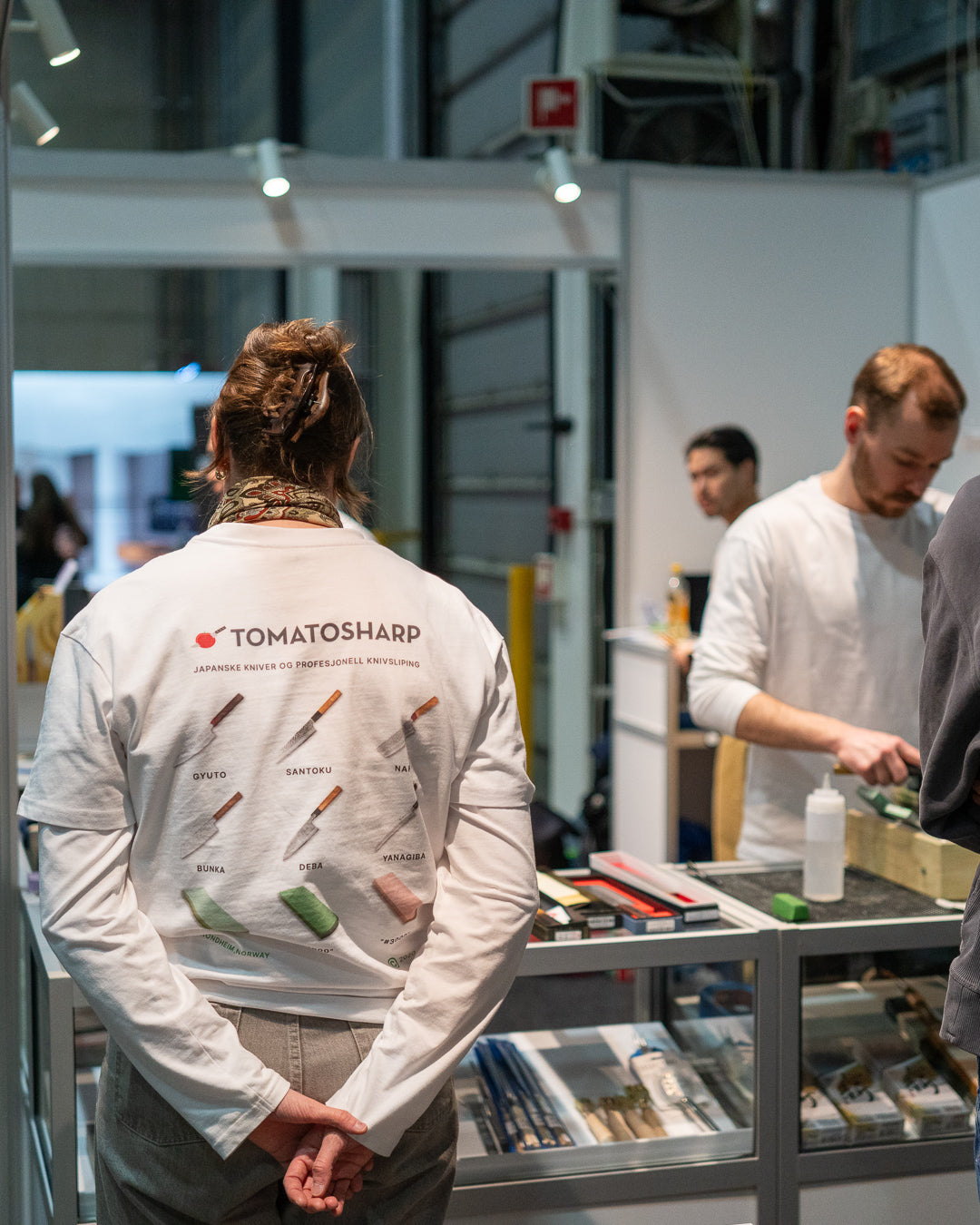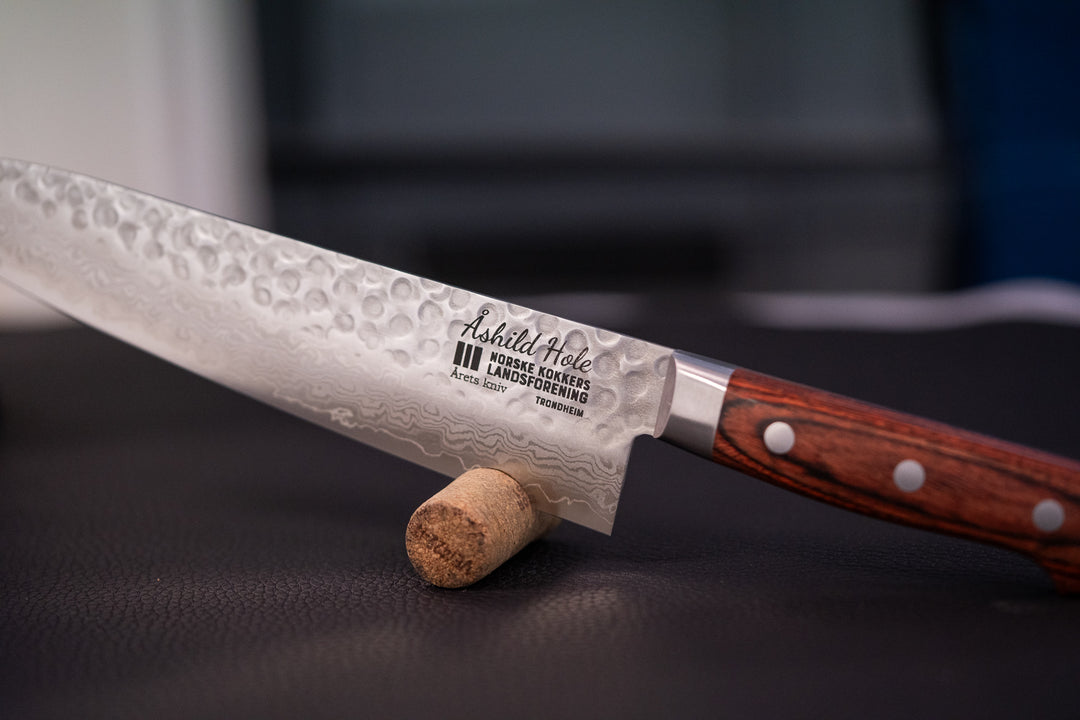KAI SHOSO Chef's knife 210 mm
- Low stock - 2 items left
- Backordered, shipping soon
Shop nå. Betal med Klarna.

- Levering 1-3 virkedager
- Fri frakt over 1000kr
- 30 dagers åpent kjøp
| Knivtype | Gyuto / Chef's knife |
| Bladlengde | 210 mm |
| Høyre-/venstrehendt | For both |
| Slipefase | 50/50 |
| Håndtak | Stainless steel |
| Hardhet | 57-59 HRC |
| Ståltype | Rustfritt stål |
| Stål | 1K6 |
The KAI Shoso Chef's Knife is a very versatile knife, and is suitable for those who want a knife that can do absolutely everything.
The chef's knife is suitable for the vast majority of tasks in the kitchen and is a safe choice if you don't quite know which knife you should go for.
KAI Shoso is part of the Seki Magoroku series, which is known for high-quality materials, great craftsmanship and careful detailing. The knives have an ergonomic stainless steel handle with a characteristic diamond pattern.
The handle has a seamless transition to the knife blade, which makes it well balanced in the hand.
The name Seki Magoroku is a combination of two well-known elements in the knife world in Japan. Seki is a city in Japan that is particularly known for its rich tradition of knife forging and its well-known knife smiths. Magoroku is a name associated with a well-known blacksmith who has become a symbol of exceptional sharpness.
Made in Japan
En gyuto er en tradisjonell japansk kokkekniv som egner seg til alle daglige kjøkkenoppgaver. Den kan sammenliknes med en typisk vestlig kokkekniv, men har ofte en lettere vekt og et tynnere blad.
Kniven har en lang og jevn profil med en spiss tupp, noe som gjør den utmerket for skiving, hakking og finkutting av alt fra fisk, kjøtt og grønnsaker.
Lengden gjør den ofte mer egnet for finskjæring / tranchering da man kan bevare fibrene i ett, rent kutt.
Et rustfritt stål med høyt karboninnhold, kjent for å holde seg skarp lenge med god rustbestandighet. Hardhet: 57–59 HRC. Ofte brukt i japanske kjøkkenkniver fra KAI
Bruk
Japanske kniver er vanligvis tynnere og mer delikate enn vestlige kniver, så de er ikke egnet for å kutte gjennom bein, frosne matvarer eller harde gjenstander. Bruk et mykere skjærebrett laget av tre, plast eller gummi og skjær med en rullende bevegelse i stedet for å presse ned med kraft.
Vask og oppbevaring
Vask kniven for hånd med mild såpe og varmt vann umiddelbart etter bruk. Tørk kniven med en myk klut eller et kjøkkenhåndkle for å forhindre rust. Oppbevar kniven på en sikker og tørr plass når den ikke er i bruk. Bruk gjerne en knivblokk, magnetisk knivholder eller knivslirer for å forhindre skader på eggen. Les mer
Vedlikehold
Vi anbefaler å bruke en keramisk brynestav i kombinasjon med en lærstropp for å vedlikeholde / skjerpe eggen. Dette gjør at kniven holder seg skarp mye lenger før den må slipes på stein. Ved sliping anbefaler vi våtslipesteiner for å få best resultat, samtidig som at man fjerner minimalt med materiale.



















